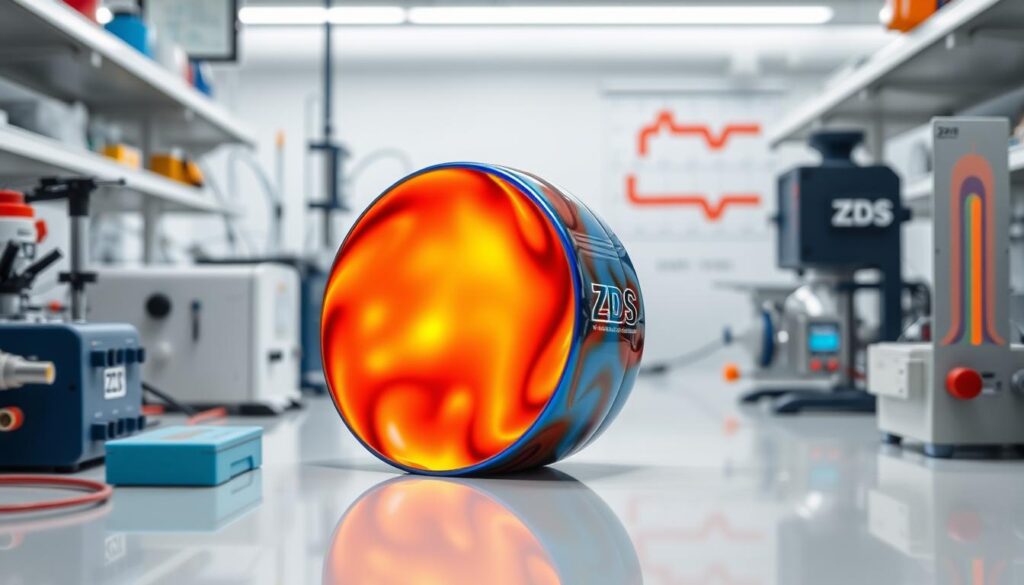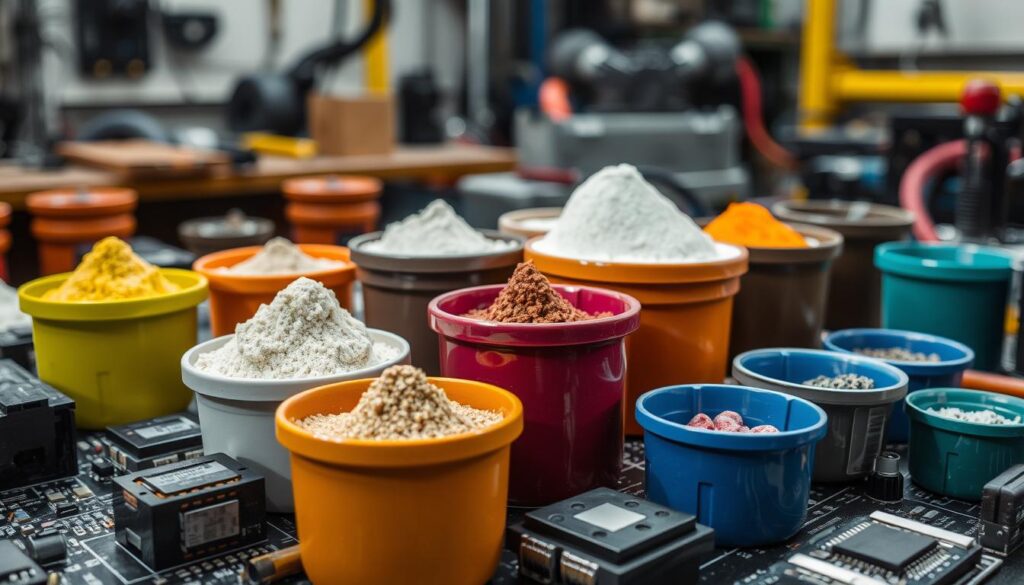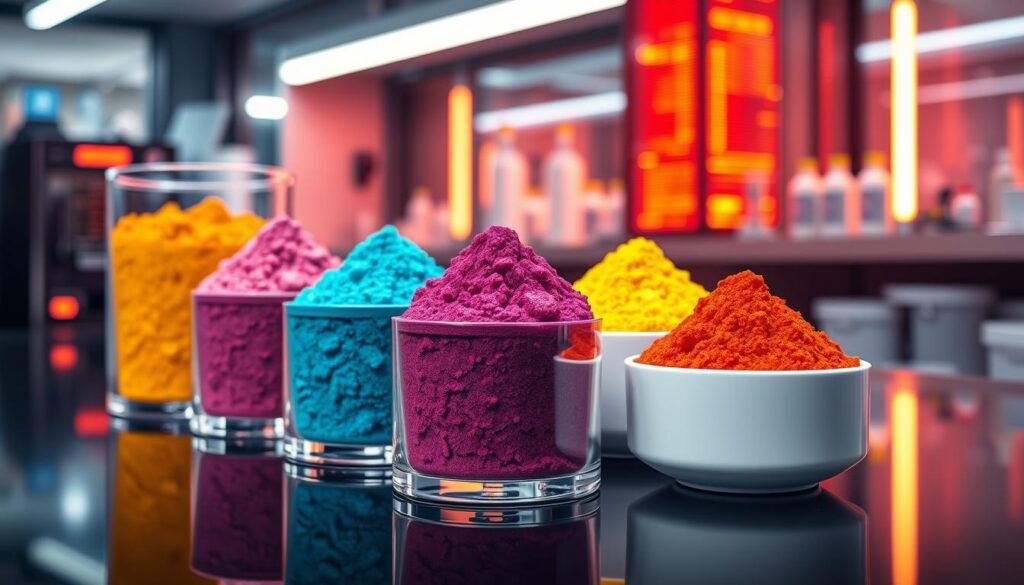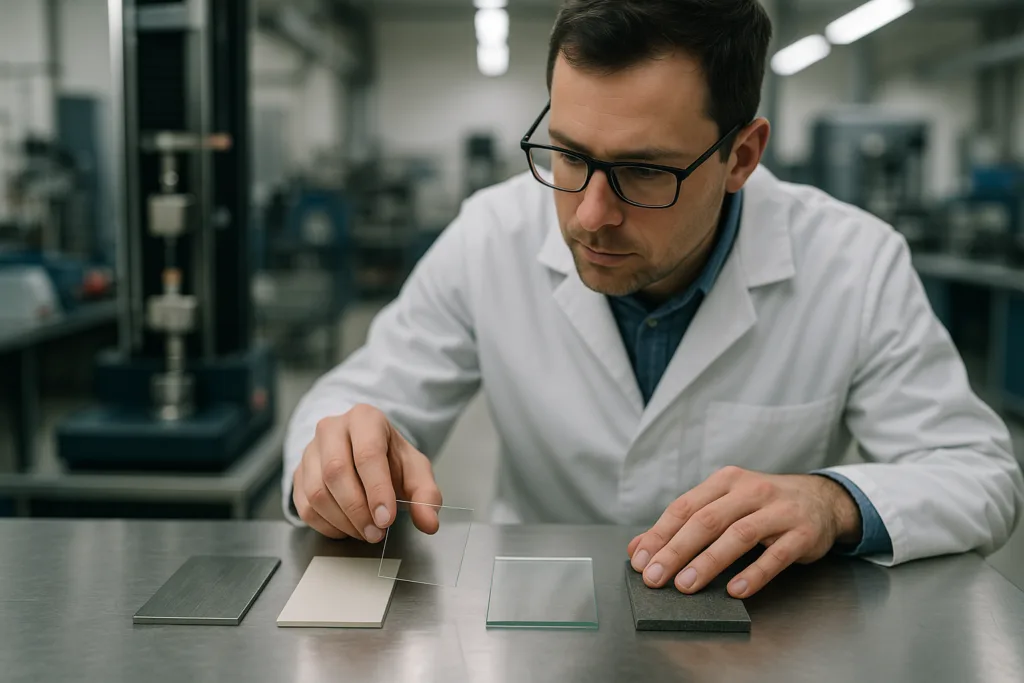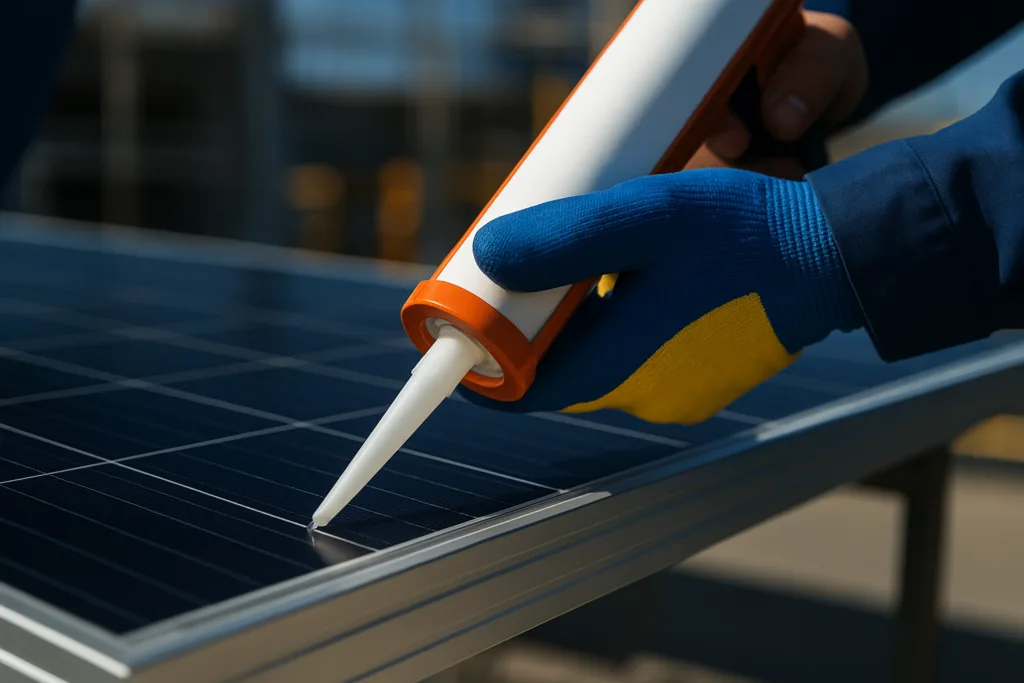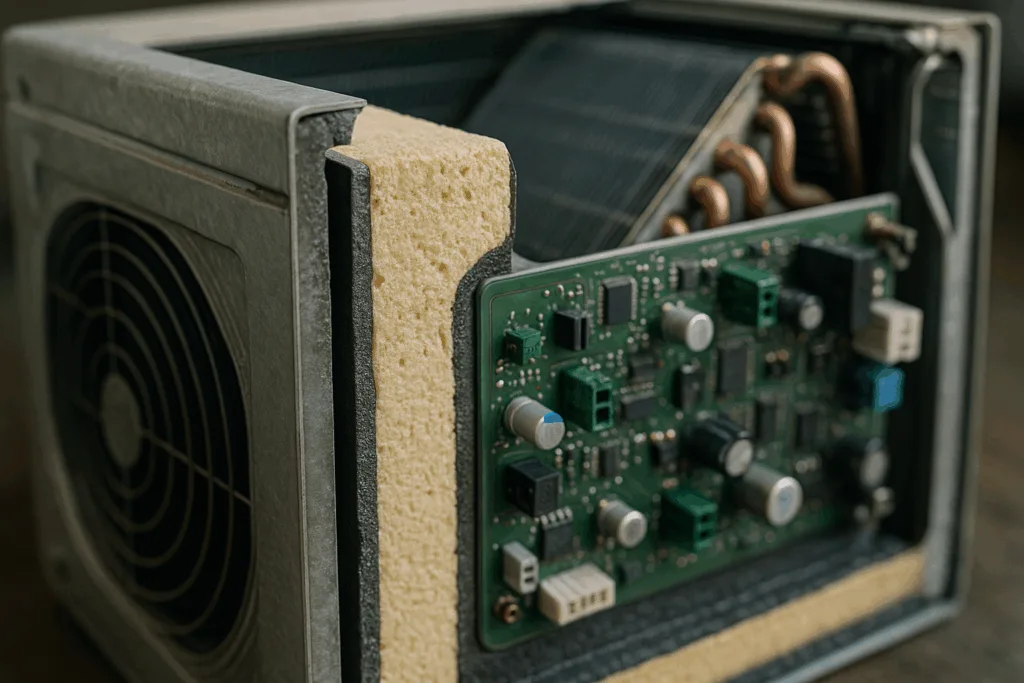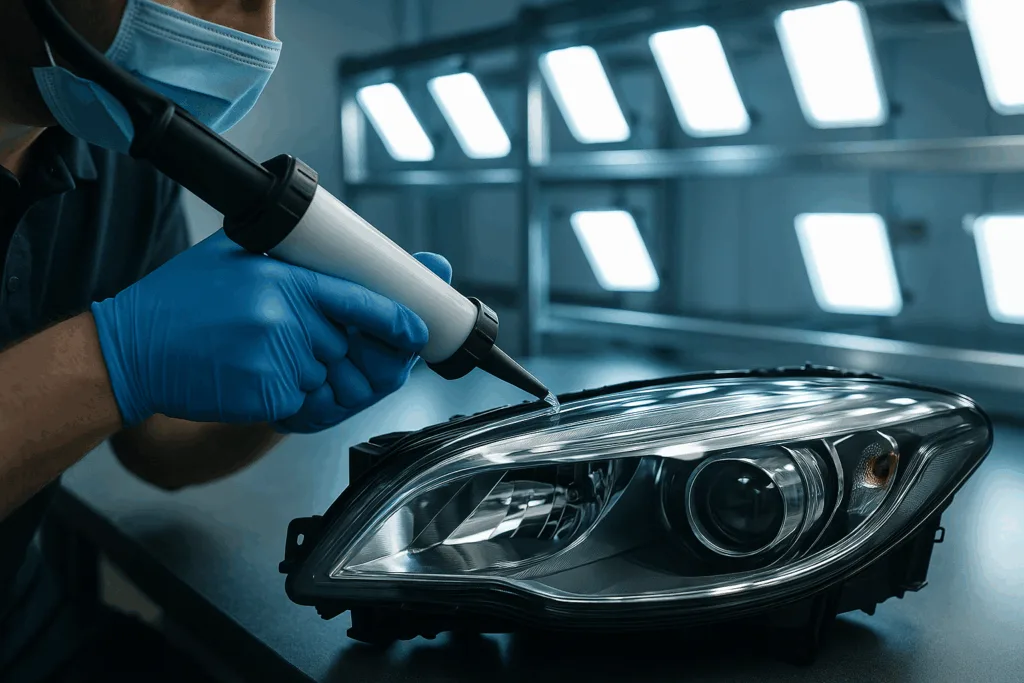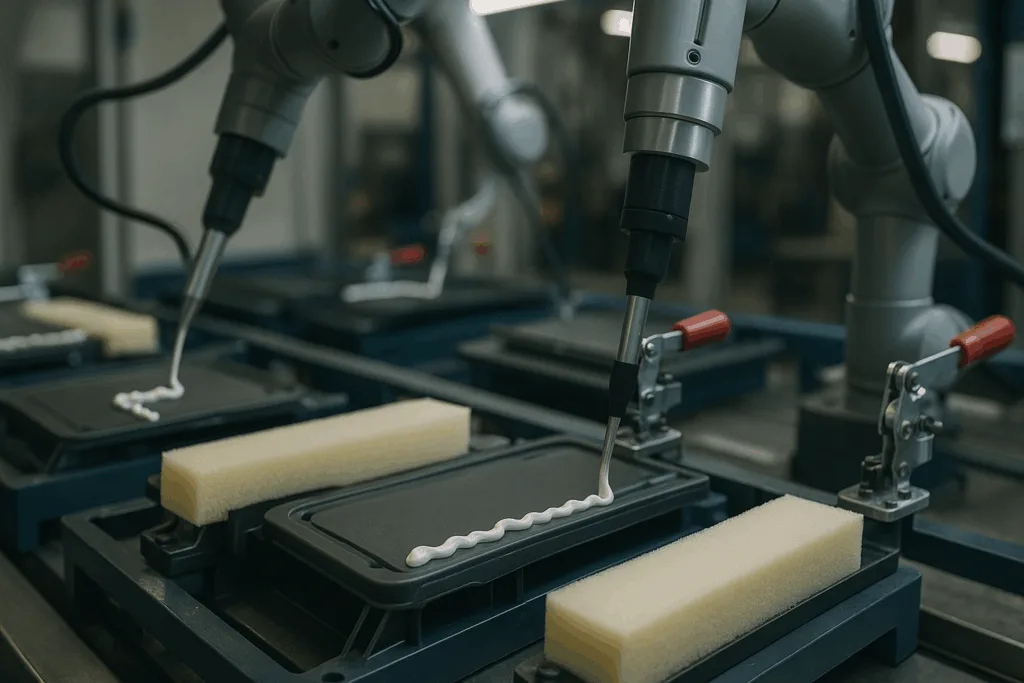Dealing with the heat from electronic parts is key for their best work and life. That’s when thermal conductivity potting steps in, making heat transfer better. It uses top-notch materials to help get heat away faster in many uses.
Thermally conductive potting from top names like ZDS™ meets the high demand for good heat control in lots of fields. This works for tough industrial spots or daily gadgets. Such materials keep devices working well and lasting longer.
Key Takeaways
- Thermal conductivity potting improves heat dissipation in electronic components.
- Efficient heat transfer solutions enhance device performance and lifespan.
- High thermal conductive potting materials support diverse industry needs.
- ZDS™ specializes in advanced thermal management solutions.
- Implementing these potting materials can lead to more reliable and durable electronics.
Introduction to Thermal Conductivity Potting
Thermal conductivity potting is key in today’s electronic systems. It helps manage the heat from electronic components effectively. For those in electronics, knowing how thermally conductive potting compound works is crucial.
What is Thermal Conductivity Potting?
This process involves covering electronic parts with materials that take heat away. It makes devices more efficient and protects them against environmental harm. Using a thermally conductive potting compound means heat moves away from parts fast. This prevents them from getting too hot and being damaged.
Importance of Heat Transfer in Electronics
Effective heat control is vital for any electronic device’s life and performance. Without it, devices can fail, shut down, or even get permanently damaged. By using thermally conductive potting compounds, heat is moved effectively. This keeps devices safe and working well. It makes sure parts last longer and are reliable and efficient.
Benefits of High Thermal Conductivity Potting Compounds
High thermal conductivity potting compounds improve electronic devices greatly. They efficiently spread out heat. This helps devices perform better and last longer.
Efficiency in Heat Dissipation
Using high thermal conductivity potting compounds greatly aids in efficiency in getting rid of heat. They pull heat away from essential parts. This ensures devices don’t overheat, work better, and costs less to maintain.
Enhancement of Device Lifespan
These compounds also increase how long devices last. They keep devices at the right temperature. This avoids damage from too much heat and makes devices more reliable and cost-effective for a longer time.
| Benefit | Description |
|---|---|
| Efficiency in Heat Dissipation | Optimizes thermal management, reducing overheating and maintenance costs. |
| Enhancement of Device Lifespan | Prolongs operational life by maintaining ideal operating temperatures. |
Applications of Thermally Conductive Potting Compounds
Thermally Polyurethane potting compounds are used in many products, from small gadgets to big machinery. They help manage heat, making devices and systems last longer and work better.
Industrial Uses
In industries, these potting compounds are very important. They are crucial in automotive, aerospace, and manufacturing sectors. They help get rid of heat in important parts.
- Automotive Sector: In cars, these compounds boost the heat handling of engine controls and batteries. This ensures they work well, even in tough conditions.
- Aerospace Industry: Airplanes use these compounds to protect important flight electronics from heat. This makes flights safer and more reliable.
- Manufacturing Equipment: In factories, these compounds keep machines stable when they work hard. This means less stopping for repairs.
Consumer Electronics
Consumer electronics also benefit from these compounds. As gadgets get more powerful and smaller, keeping them cool is critical. These compounds are found in:
- Laptops: They stop laptops from getting too hot, making sure they run smoothly.
- Smartphones: High-tech phones get hot quickly. These compounds help keep them cool, making them last longer and more comfortable to use.
- Gaming Systems: For gamers, these compounds keep consoles cool, ensuring good performance during long gaming sessions.
By using these potting compounds, manufacturers make sure that their products are efficient, long-lasting, and reliable. This improves performance, safety, and satisfaction for various devices and systems.
Features of Thermally Conductive Potting Resins
Our thermally conductive potting resins are designed to boost electronic component performance. They have high thermal conductivity, resist chemicals well, and stick to surfaces strongly. These qualities help transfer heat effectively, making devices last longer and work reliably.
These resins serve two main purposes: They keep electricity safe and remove heat quickly. This means electronic devices can work well even when they’re under a lot of pressure. Our thermally conductive potting resins are known for their innovation and high quality. They meet the top standards in their industry.
| Feature | Benefit |
|---|---|
| High Thermal Conductivity | Efficient heat transfer and dissipation |
| Chemical Resistance | Durability in harsh environments |
| Excellent Adhesion | Strong bond with electronic components |
| Electrical Insulation | Safe operation of devices |
By adding these features to our products, we make our thermally conductive potting resins surpass what’s expected in today’s electronics. Our dedication to quality helps us offer solutions that improve the performance and safety of various devices.
Our High Thermal Conductivity Potting Materials
Our high thermal conductivity potting materials are designed for excellent heat transfer. They can perfectly protect and cool electronic parts. This makes them very efficient.
Composition and Properties
These materials are made from special fillers and resins, chosen for their ability to manage heat. They are strong, perform well under heat, and last a long time. They’re not only good at transferring heat but also offer great electrical insulation and stick well to surfaces. This makes them perfect for many uses.
Customization Options
We know that different applications have unique needs. That’s why we offer lots of ways to customize our materials. You can choose how thick or thin they are, how quickly they harden, and how well they conduct heat. This ensures they work exactly as needed in every situation.
| Parameter | Standard | Customizable Options |
|---|---|---|
| Thermal Conductivity | 2.0 W/m·K | 1.5-3.5 W/m·K |
| Viscosity | 10,000 cP | 5,000-15,000 cP |
| Curing Time | 30 minutes | 15-120 minutes |
With these customization options, we make sure our materials are a perfect fit for your project’s needs. Our approach is to exceed what’s expected by aligning our solutions with the exact conditions your project demands.
Thermal Potting Solutions for Various Industries
Our thermal potting solutions are designed with precision. They serve various industries by managing heat and offering protection. They are perfect for solar energy systems, advanced lighting, and critical medical devices. Our products bring excellent thermal conductivity and are very reliable.
We understand each industry has its own needs. Thus, we’ve crafted our thermal potting solutions to match them. Our high-performance compounds meet strict regulatory standards. They promise superior performance too.
- Solar Energy: Our compounds manage heat well and are stable long-term. This guarantees solar panels work well and last.
- Lighting: We boost the lifespan and efficiency of LED and other lights with superior thermal management.
- Medical Devices: We comply with medical standards, ensuring our materials are safe and reliable in healthcare.
Here, we share some important details about our thermal potting solutions for various industries:
| Industry | Key Features | Regulatory Compliance |
|---|---|---|
| Solar Energy | High thermal conductivity, UV resistance, weather durability | IEC 61215, UL 1703 |
| Lighting | Heat dissipation, electrical insulation, moisture resistance | UL 8750, CE |
| Medical Devices | Biocompatibility, sterilization resistant, thermal stability | FDA, ISO 10993 |
Comparison: Best Potting Materials for Thermal Conductivity
We conducted a detailed study to find the top potting materials for conducting heat. Our goal was to see how well each material moved heat away and how reliable it was. We looked at how easy they were to use and how well they worked.
Comparative Analysis
Our study examined important aspects like how well materials conduct heat, their thickness, how long they take to set, and their strength. We put our findings into a table to make them easy to compare:
| Material | Thermal Conductivity (W/mK) | Viscosity (cP) | Cure Time (hours) | Mechanical Strength (MPa) |
|---|---|---|---|---|
| Silicone Rubber | 2.1 | 1000 | 24 | 1.5 |
| Epoxy Resin | 3.0 | 5000 | 5 | 2.0 |
| Polyurethane | 2.5 | 2000 | 8 | 1.8 |
| Hybrid Polymers | 3.5 | 3500 | 12 | 2.2 |
Customer Feedback
We asked customers for their honest opinions. The top materials for spreading heat were praised for their consistent performance and ease of use. People mentioned the perfect mix of heat handling and strength was key for choosing.
Many shared that it’s important the materials are easy to apply and set quickly. This insight made it clear that real-life use is as crucial as technical performance.
After looking at both the analytical study and what customers had to say, we recommend materials that perform well in the lab and are loved by users for daily use.
Innovations in Heat Transfer Potting Materials
ZDS™ leads in crafting new heat transfer potting materials. We use the latest advancements to boost heat dissipation efficiency. Our goal is to stay ahead, updating our products to match industry needs and smaller electronics. Our efforts ensure our materials excel in thermal management for the toughest jobs.
Efficient heat management is key in today’s small electronic devices. Our focus is on materials that boost device performance and life. Efficient thermal management stops overheating and keeps devices working right.
Key aspects of our developments include:
- Enhanced thermal conductivity to optimize heat dissipation.
- Adaptability to various electronic components, regardless of size and complexity.
- Improved material stability under different environmental conditions.
Reliable and efficient thermal solutions are what the industry needs. We’re dedicated to advancing in heat transfer innovations.
How to Choose the Right Thermal Conductivity Potting Compound
Choosing the right thermal conductivity potting compound is crucial for the efficiency and lifespan of electronics. It’s important to know how to sift through the many options available. This involves understanding several key factors.
Considerations for Selection
We must look into the thermal needs of the device. This includes checking how well it dissipates heat and its operating temperature range. The layout of parts and their locations also plays a big role in how well the compound works.
It’s also key to think about the environment it will be in. This means looking at humidity, chemicals that may be around, and physical pressures it might face.
Expert Recommendations
ZDS™ experts offer advice tailored to specific situations. They recommend compounds that match the unique needs of each project for the best results. With this expert help, picking the right potting compound becomes a confident choice, ensuring high performance and long-lasting durability.
Case Studies: Enhancing Heat Transfer with ZDS™
Our thermal conductivity potting compounds have been top-notch in various industries. They tackle complicated heat management problems. By looking at real-world uses and achievements, we show how effective and dependable our products are. Here are some key case studies that mark major progress in heat transfer and device life.
Real-World Applications
Our ZDS™ potting compounds stand out for their adaptability. They’re crucial in fields like automotive electronics and aerospace systems. For example, a top car maker was fighting heat issues in electric car battery systems. Using our high thermal compound, they improved heat flow. This led to better battery function and more life.
In the aerospace sector, a big company faced a hurdle in keeping critical avionics at the right temperature. Our potting solutions helped them greatly in managing heat. This, in turn, increased the systems’ reliability and safety on long missions.
Success Stories
The wins of our clients underline the real gains from our thermal potting compounds. Take a well-known electronics brand, struggling with devices overheating. After adopting our ZDS™ solutions, they saw way fewer heat issues. Plus, there was a big leap in device performance and customer happiness.
| Client | Challenge | Solution | Outcome |
|---|---|---|---|
| Automotive Manufacturer | Overheating in EV batteries | ZDS™ Potting Compound | Improved battery performance, extended lifespan |
| Aerospace Company | Heat management in avionics | ZDS™ Potting Solution | Enhanced reliability and safety |
| Consumer Electronics Brand | Device malfunctions due to heat | ZDS™ Thermal Potting | Reduced overheating, improved performance |
Steps to Apply Thermally Conductive Potting Compounds
Using thermally conductive potting compounds the right way is vital. It makes sure heat moves well and devices work their best. To start, you need to prepare properly. This is key to getting top results. Follow this guide for both prep and application, so you get the most out of these materials.
Preparation
To apply potting compounds successfully, first prep the surface well. Make sure it’s clean of dust, grease, or anything that could stop it from sticking. Using a primer can make the bond stronger and better transfer heat. It’s important to wait until the surface is fully dry before applying the compound.
Application Process
Now, get ready to apply the potting compound. Measure the amount you need and mix it well if needed. Then, spread it evenly on the surface. Be mindful of how long and under what conditions it needs to cure since this can vary. Once you’ve applied it, do a careful check to make sure it’s applied and cured correctly. Following these steps will help solve any heat issues with your electronics.
FAQ
What is Thermal Conductivity Potting?
Thermal conductivity potting uses special materials to pull heat away from electronics. This boosts heat loss and shields sensitive electronics from heat harm.
Why is heat transfer important in electronics?
Heat transfer keeps electronics from overheating, which can cause them to fail and shorten their life. Managing heat well ensures electronics work reliably for longer.
What are the benefits of high thermal conductivity potting compounds?
High thermal conductivity potting compounds improve heat dissipation. They make thermal management more efficient, cut maintenance costs, and make electronic devices last longer.
Where are thermally conductive potting compounds used?
Thermally conductive potting compounds are found in industrial and consumer electronics. The automotive, aerospace, and manufacturing industries use them. So do devices like laptops, smartphones, and gaming consoles.
What are the features of thermally conductive potting resins?
Thermally conductive potting resins have high thermal conductivity and resist chemicals well. They stick well and provide insulation while letting heat move through. This makes them useful in many applications.
What high thermal conductivity potting materials do we offer?
We have high thermal conductivity potting materials made of advanced fillers and resins for the best heat transfer. We can tweak them for viscosity, curing times, and thermal performance as needed.
What industries benefit from our thermal potting solutions?
Many industries, like solar energy, lighting, and medical devices, benefit from our thermal potting solutions. We make sure our potting compounds meet the specific standards of each industry.
How do we compare the best potting materials for thermal conductivity?
We look at different potting materials for thermal conductivity carefully and listen to what customers say. This helps us find the best solutions for our clients.
What innovations in heat transfer potting materials do we offer?
We’re leading the way in new heat transfer potting materials. We use the newest technologies to better handle heat and meet the needs of shrinking electronics and changing industries.
How do I choose the right thermal conductivity potting compound?
To pick the right thermal conductivity potting compound, think about your thermal needs, how your components are set up, and what they’re exposed to. Our experts can give advice for the best results.
Can you provide case studies on enhancing heat transfer with ZDS™?
Yes, we have case studies that show how our potting compounds have solved heat problems in the real world. They show clear gains in performance and dependability.
What are the steps to apply thermally conductive potting compounds?
To apply thermally conductive potting compounds, start by getting things ready, like cleaning and priming. Then apply the potting compound and let it cure. Check your work after to make sure it’s done right.


